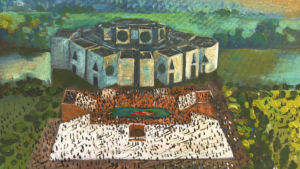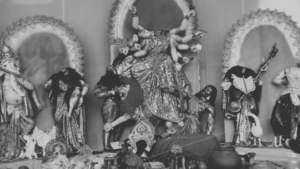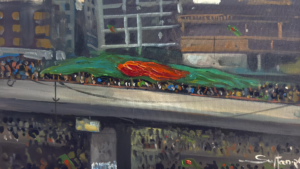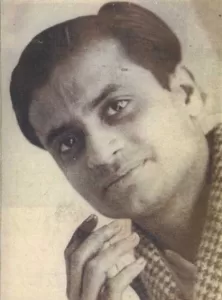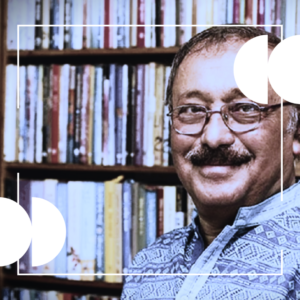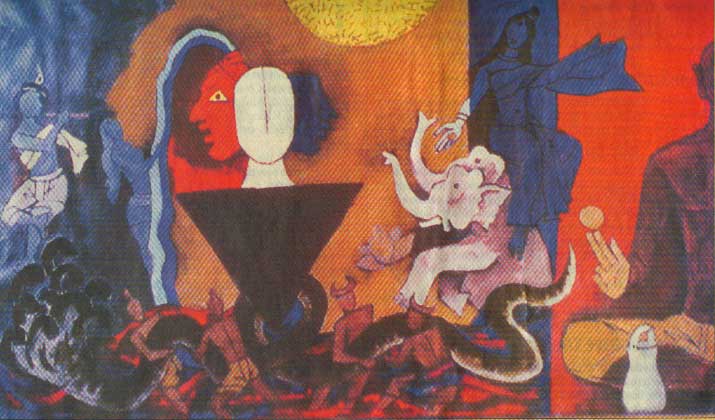
[Following is the text of the keynote lecture delivered at the South Asia Conference of the Pacific Northwest (SACPAN) on 5 February at University of Oregon, Portland].
My deepest gratitude and heartfelt thanks to the organizers of the South Asia Conference of the Pacific Northwest (SACPAN) and the University of Oregon for inviting me and providing me the opportunity to be a part of the Jeremiah Lecture Series. Thanks to the co-organizers of the conference. I am particularly thankful to Professor Lamia Karim for this invitation. Thanks to Jonathon Campbell for taking care of all the logistics and his warm hospitality.
The topic of my presentation, as you can understand, has been driven by recent events in South Asia, particularly in India, Pakistan and Bangladesh. Violence, extremism, civil war, and insurgency are not alien to the region. Yet, in recent years, the region seems to have entered into an age of intolerance. Unwillingness to accept the beliefs, opinions, behavior, practices of someone different seems to have become dominant. It is not the fringe elements of the society who are displaying these characteristics, but instead increasingly this feature is becoming an integral part of the society and mainstream politics.
Discussion on intolerance is challenging, because it evokes passion and has the risk of being misunderstood. Questions such as – how would you define intolerance? Intolerance by whom and of whom? can be raised. For our understanding, I define intolerance in the minimalist sense —the unwillingness to put up with disagreeable ideas and groups. While all of us would like to understand why the intolerance has persisted and has grown enormously in recent days, neither can I nor do I intend to offer a definitive answer. Instead I would like to demonstrate how complex the issue has become.
The epidemic of intolerance
The year 2015 is marked by great concerns with respect to the ‘communal’ relationship in India. According to the Home Affairs data available to the press, there was a 25% increase in incidents of communal violence, 1 or to quote India Today, “a surge in communally charge incidents in BJP led states.” 2 Indeed, lynching, brutal shooting, merciless burning and rampant killing of Indian citizens have been reported in the press.
Three kinds of incidents have taken place India throughout 2015 and before, which indicate a pattern showing a sharp declining trend of tolerance. The first one can be described as the ‘beef controversy.’ It began with the ban on the sale of meat during the Jain festival of Paryushan in September 2015, 3 followed by the lynching of Mohammad Akhlaq by a Hindu mob in Dadri for allegedly consuming beef, 4 followed by a scuffle between legislators in the state of Jammu Kashmir in October after ruling party legislators attacked a Muslim legislator for holding a party where beef was served. 5
The second kind of violence was perpetrated against critical voices. In February 2015, the communist leader Govind Pansare was killed near Mumbai. 6 In August, M.M. Kalburgi, a 77 year old scholar, and an outspoken critic of Hindu idol worship, was gunned down on his own doorstep. 7 In September, a leader of the militant organization Sri Rama Sene, Siddalinga Swami told reporters in Karnataka that Hindus were hurt by the comments of the litterateurs like Professor KS Bhagwan and Chandrashekhar Patil, who allegedly spoke ill of Hindu epics, the Ramayana and the Mahabharata. “The epics are followed by millions of Hindus as sacred texts. People will not tolerate the belittling of Ramayana characters, who are worshipped. They will cut off the tongues of writers if they do not stop insulting Hindu gods,” he said. 8 K S Bhagwan, a retired professor and critic of the Hindu caste system was threatened via twitter that he will be the next victim. Two years ago, activist Narendra Dabholkar was murdered for campaigning against religious superstitions. 9 Vice-President Hamid Ansari was accused of speaking like a “communal Muslim leader” by RSS mouthpiece ‘Panchjanya’ despite the fact that the Vice-President while referring to issues relating to Muslim identity and security also urged Muslims to think along plural, secular and democratic lines.
The third kind of violence was intended to force conformity with the dominant political discourse. The Shiv Sena in October compelled Pakistani Singer Ghulam Ali to cancel his concerts in Mumbai and Pune. 10 The members of the organization manhandled former Bharatiya Janata Party ideologue Sudheendra Kulkarni for going ahead with former Foreign Minister of Pakistan Khurshid Mahmud Kasuri’s book launch in Mumbai. 11 As if these incidents were not enough, when a significant number of writers, artists, scientists condemned these actions, they were vilified. Reputed film star Amir Khan was described as ‘anti-Indian’ and dropped from being one of the brand ambassadors of the government’s campaign called the ‘Incredible India’ after his remarks on the growing intolerant environment. 12
In Pakistan, sectarian violence has continued to cost hundreds of lives of non-Muslims, and minorities within the Muslim community. This was in addition to the institutional violence routinely perpetrated through the infamous Blasphemy law. In November 2015, an enraged mob set an Ahmadi place of worship on fire in Punjab’s Jhelum district; 13 in May 2015 Christian homes and churches were attacked after blasphemy allegations were made against a Christian man. 14 In July 2014, a mob killed three members of the Ahmadi community after an alleged “blasphemous” picture posted on Facebook by a member of the Ahmadi community named Aqib Salim; 15 members of their community have been arrested on charges of blasphemy; a Christian couple was set ablaze at a brick kiln by a mob accusing them of blasphemy. 16 Asia Bibi, the first woman on Pakistan’s death row, awaits a hearing on her death sentence after being accused of blasphemy in 2009. The assassinations in 2011— of Salman Taseer, the governor of Punjab, and Shabhaz Bhatti, the Christian federal minister of minority affairs—for opposing the nation’s draconian and much abused blasphemy laws illustrate the extent of the toxic environment. Lawyer Rashid Rehman and former Justice Arif Iqbal Bhatti faced a similar fate.
As for sectarian violence, a recent study by an Islamabad-based think tank disclosed that between 2012 and 2015, some 19,000 Shi’a Muslims have been killed in bomb blasts and militant attacks. 17 This includes the attacks on Shia’s such as the killing of 61 Shias in bomb blasts in a Shia mosque in Shikarpur in Sindh in January and the killing of over 45 Shias in an attack on their bus in Karachi in May.
In Bangladesh, deteriorating climate for tolerance is discernable as extremist rhetoric and actions by state and non-state actors are on the rise. Tension between commonly referred to ‘secular’ and ‘religious’ forces have redoubled, and persecution of nonconformist voices has increased. The rising tide of intolerance is visible in activities such as extrajudicial killings, murders of bloggers and writers, and abuse of laws for political interests. To date, at least five bloggers and a publisher have been brutally murdered since 2013. An Islamist militant group has claimed the responsibility for these killings. ‘Bloggers’ of all shades have been labelled as atheists, portraying them as ‘enemies of Islam’ to justify these murders. Conservative Islamist groups have demanded punishment for bloggers who have allegedly criticized Islam or the Prophet. They also demanded the introduction of an anti-blasphemy law with provision for the death penalty and exemplary punishment to all who “insult Islam.”
On the other hand criticisms of the government has become perilous. The government has used the Information and Communication Act, particularly Article 57, to silence its critics. The law has been used against officials of a Human Rights Group, and a number of individuals. Media have been muzzled, in more than one way. Credible allegations that members of law enforcement agencies are abducting political opponents of the regime have grown in recent years. At least 55 incidents have been reported in the press. Additionally, the number of extrajudicial killings, euphemistically called the ‘crossfire’, wherein law enforcing agencies kill individuals after picking them up from streets, homes or work have become normal. According to a Human Rights group the number was as high as 192 in 2015. Public lynching has increased significantly in the past years.
We have also seen the rise of violence against the members of religious and ethnic minorities. Human Rights Groups have recorded destructions of 104 homes and 197 temples or monasteries or deities in 11 months in 2015. Hindus have become targets of persecution and in many instances lost their properties which have forced them to migrate to neighboring India.
Who is to be blamed?
Apparently the nature of these incidents and the identities of the victims vary across the countries and within the countries. Yet, in case of phenomenon like this, we tend to look for perpetrators. Or simply stated, we ask the question – who is to be blamed?
There is a usual suspect. Whenever there is an issue of intolerance, there seems to be the temptation to blame the ‘religious fundamentalists.’ As Pankaj Mishra has noted, ‘it seems well founded: self-proclaimed Hindu and Muslim chauvinists, after all, lead and cheerlead the violence.’ 18 While this is apparently true, it does not sufficiently explain the growing intolerance in the region Mishra has recognized. Blaming the usual suspect may provide us comfort, but it will hardly provide a complete picture. The phenomenon is far more complex and warrants our attention to larger issues.
I suggest that we begin at the most common element in these incidents: the role of the state. Either through direct involvement or through absolute inaction the states in South Asia have acquiesced to the growing intolerance. Take, for example, the blasphemy law in Pakistan; although a colonial vestige, it has been strengthened between 1980 and 1986. Despite the demise of the military regime which strengthened it decades ago, the law has remained intact and being used on an everyday basis, primarily against religious minorities. The proactive implementation of the blasphemy law shows that the state has vested interests in maintaining a toxic environment. Often being accused of blasphemy is all it takes; many accused have been murdered even before they were tried. Lawyers have been intimidated and killed for defending people accused of blasphemy. One can recall that a Justice at the Islamabad High Court embraced the self-proclaimed assailant of Salmeen Taseer.
Pakistani state’s attitude towards sectarianism is another example of the state’s acquiescence. The state has not prevented the proliferation of the militant sectarian groups – both Sunni and Shia; instead, it has made ample use of these conflicts to justify the militarization of society and state.
Indian Prime Minister Narendra Modi’s indifference and long silence to the lynching of Muhammad Akhlaq, and Haryana Chief Minister’s comment that “Muslims can continue to live in this country, but they will have to give up eating beef” are indicative of the attitude of the ruling BJP leadership. Concurrently the state machinery remained oblivious to the killings of the authors such as Govind Pansare and was unresponsive to the protests by the scholars, authors and artists to the growing trend of intolerance. The militant organizations such as the RSS, connected to the ruling party, continue to enjoy impunity. The most glaring example of providing impunity to the perpetrators is the case of Vivek Premi, the leader of the Bajrang Dal. He was arrested in June 2015 for beating up and parading a Muslim man through a market for allegedly stealing a calf in Shamil, Lucknow. But central government’s actions in January 2016 led to his release. 19
In Bangladesh, although the current government continues to claim that it is ‘fighting the extremism’ it has not only failed to protect the bloggers but also suggested that the writers should exercise restraint while discussing religion. One can hardly fail to notice that the ruling party’s position has shifted from openly embracing the “atheist bloggers,” to maintaining a safe distance from them, to being critical of them, to warning them of consequences. For example, in 2013 Prime Minister Sheikh Hasina spared no time in visiting the parents of Rajib Haider and described him a “martyr” when he was hacked to death, whereas she only made a call to the father of Avijit Roy, another blogger brutally murdered in 2015 and it was not made public. In May 2015, the Prime Minister’s son and her Information and Communication Technology Affairs Adviser Sajjib Wazed said that “the political situation in Bangladesh is too volatile for her [the Prime Minister] to comment publicly [on Avijit’s killing].” 20 He also said, “We don’t want to be seen as atheists.” Two days after the murder of Niladry Niloy, the Inspector General of Police advised the bloggers not to write blogs that may hurt religious sentiments. 21 The Home Minister stated that “actions as per the existing law of the country will be taken against those who will write anything on blogs or any other media hurting religious sentiment.” 22 The Prime Minister essentially echoed the position when she said that, the government “won’t allow anybody to hurt religious sentiments.” 23 Additionally, a wing of the ruling Awami League, demanded capital punishment for hurting religious sentiment. 24
South Asian states and the exclusivist discourses
However, these pale compared to the deep-seated problem associated with states in South Asia. South Asian states are continuously engaged in producing a homogenized discourse of patriotism, national identity, purity and danger. These together create a very narrowly defined exclusivist nationalism. In such an environment diversity and multivocality succumb to nationalist frenzy, and violent rhetoric becomes naturalized.
The primary objective of exclusivist nationalism is to create a binary frame: us versus them. This endeavor results in what Amin Maalouf has described as a “deadly identity” 25 and Arjun Appadurai has described as “predatory identities.” 26 The defining characteristics of the deadly identity are ‘negative, antagonistic and chauvinistic.’ Importantly, this identity fears multiplicity. In Appadurai’s formulation, predatory identities’ “social construction and mobilization require the extinction of other, proximate social categories, defined as [a] threat to the very existence of the same group, defined as we.”
The construction of the “them” that is the “collective other” — within and outside of the country — serve as one of the fountains of the growing intolerance. In India, the “other” within the country has been characterized by anti-Muslim sentiment as well as the unequivocal supremacy of Hindutva ideology, the external other remains Pakistan. Similarly, creating the “other” is necessary to endure the dominance of the majority group in Pakistan. Ahmadis and Shia communities have been portrayed as “the other” within Islam and Christian and other religious groups have been “the other” beyond Islam. One can describe these as ‘pseudo-religiosity.’ These narratives are constructed by the state, and legitimized through laws and state encouraged social practices. In the context of Bangladesh, a linear nationalist grand narrative of the history of Bangladesh, particularly of the independence war of 1971 has been created in the recent years. Questioning and /or critical examination of the narrative is portrayed as un-patriotic. Borrowing from Neera Chandoke we can say, ‘this genre of nationalism .. dismisses those who question the shape of this nationalism as anti-national.’ 27 These discourses are laced with the rhetoric of violence, which in turn create the environment within which the real violence not only becomes legitimate but an integral part of the perception of the nationhood.
From exclusivity to majoritarianism
The exclusivist nationalism that I have referred to is not benign. “Narrow in scope, chauvinistic in content, stereotypical in form, and constructed around the homogenizing impulse, cultural nationalism attempts to accomplish fetes. It seeks to construct majorities and minorities out of a plural, heterogeneous and loosely articulated society, and it seeks to institutionalize fissures between two constructed groups on the basis of stereotypes and stigmata.” 28
In this majority-minority discourse, numbers are used to create an epistemic insecurity (i.e., the survival of the community is at stake). In South Asia, it is the numerically larger community which continues to argue that the “minority” constitutes the threat. In the case of Bangladesh the exclusive Muslim identity allows the Islamists to go after the Hindu community as the ‘enemy within’ and the exclusive Bengali identity paves the way for attacking other ethnic groups. In India, the Hindutva ideologues and activists insist that the minority Muslim community poses the threat to the “Hindu nation,” the Christians are the mortal threat according to Islamists and the Pakistani state. These arguments are framed as the arguments of the majority. In India, the BJP’s rhetoric of democracy is based on a simplistic majoritarian principle. The proponents of majoritarian arguments assert that they are not only speaking for the “majority”, but also for the nation. Religion, ethnicity, nation and majority have been merged into one and the same.
Often this majoritarianism is based on a constructed notion of the ‘nation’/‘community.’ Take for example the notion of the Hindu majority in India. As Appaduarai has aptly noted, ‘the Hindu majority is a double fiction in contemporary India; first because the category “Hindu” is unthinkable in contemporary politics apart from its birth in colonial ethnographies and census categories and second, because the deep divisions between upper and lower castes, always a feature of life in agrarian India, has grown into one of the most important fissures in the politics of North India in the past two decades.’ 29 Deshpande has expressed his doubt ‘whether the people talked of themselves as Hindus before the colonial phase of our history’ 30
Beyond state and politics: Culture and civil society
To think that the intolerance is bred within the political discourse and reproduced in the arena of explicit contestation for power is a folly. If one source of the phenomenon is top-down – that is inextricably connected to the state’s agenda and imposition of certain practices that allow them to internalize violence, the other part is definitely bottom-up and emerges from the grassroots, from the civil society. The intolerance that we are witnessing in South Asia is also a result of the daily public culture which not only construct “us” but also a generalized abstract “other.” The broader public culture, ‘the public space, in which a society and its constituent individuals and communities imagine, represent, and recognize themselves through political discourse, commercial and cultural expressions’ 31 is the place where intolerance is nourished. Perhaps the best example in this regard is the sudden outburst of patriotism or nationalist resurgence within the civil society in the wake of an event. Although such ‘patriotic fervor may appear spontaneous, [often] its genealogy suggests otherwise.’ 32
In this respect we should take a look at the role of the civil society. It is well to bear in mind that in South Asia, particularly in Pakistan and Bangladesh, “domineering (dominant, not hegemonic) presence of the state has sharply curtailed civil society.” 33 Such robust presence and manipulating capacity of the state have made the civil society ‘a site of the reproduction of statist projects.’ 34 Additionally, the political parties – both ruling and opposition – have tried to establish control over the civil society; in so doing these parties have weakened the autonomy of the civil society and its ability to mount a resistance against the virulence. In many instances, the civil society has furnished the principal elements of constructing the exclusionary nationalism or narrowly defined secularism – either as a statist project or as agenda of the political forces.
By way of conclusion
The foregoing discussion does not provide a complete picture, I must admit. Perhaps, there are other equally important factors that we must take into account in understanding the causes of and conditions for the presence of the culture of intolerance in South Asia. But I hope I have made a case for revisiting the commonly held perception that there is a clear-cut picture. Understanding the intolerance in South Asia demands thinking outside the box. Perhaps Steven Salaita’s point on violence will be of some help to us. He said, “We should work to better understand how the elite apportion discourses of violence into categories of good and evil, civilized and savage, rational and unreasonable. Who creates these binaries? Who suffers their finality? Who profits from their endurance?” 35 On the issue of intolerance, my question is somewhat simple: are we ready to question our own preconceived notions?
Thank you all for your patience.
5 February 2016
Source of Thumbnail: Link
